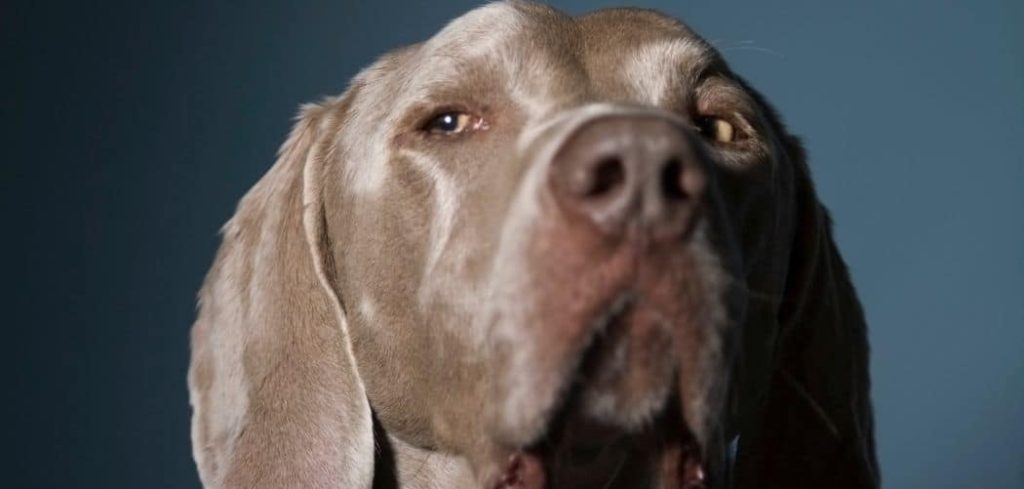When a dog’s stool shows yellow mucus, it can be an alarming sight for any pet owner. The unusual color often signals irritation or an underlying health issue in the digestive system.
While some causes may be mild and temporary, others may require immediate veterinary care.
We outline what yellow mucus in a dog’s poop means, what you can do at home, and when to seek veterinary help.
What Does Yellow Mucus in Dog Poop Mean?
Yellow mucus in dog poop usually points to inflammation or disruption in the digestive tract. This can stem from dietary indiscretion, intestinal infections, parasites, or more serious conditions such as liver or pancreatic disease.
Sometimes food sensitivities or stress can also contribute to the production of mucus and the yellow tint.
The appearance of mucus is the body’s way of protecting irritated intestines, while the yellow color may indicate bile involvement or digestive imbalance.

Does Yellow Mucus in Dog Poop Mean: Common Causes
Dietary Indiscretion
Dogs often eat things they shouldn’t, from spoiled food to grass and even non-food items. When this happens, the gastrointestinal tract can become irritated, leading to inflammation.
The intestines may then produce excess mucus to protect the lining. If bile passes through the system quickly, it can give the mucus and stool a yellowish tint.
In these cases, symptoms often resolve within a day or two if the irritation is mild, but persistent mucus signals something more serious.
Read more: What Does White Mucus in Dog Poop Mean? (Causes explained)
Food Sensitivities or Allergies
Some dogs develop sensitivities to ingredients such as chicken, beef, dairy, or grains. When a dog’s body reacts to these foods, the intestines may produce excess mucus.
The yellow coloration can also arise when digestion is disrupted by inflammation caused by the allergen.
Along with mucus in the stool, dogs may show itching, ear infections, or chronic soft stools. If left unmanaged, food allergies can lead to long-term gut irritation.
Intestinal Parasites
Parasites such as giardia, roundworms, or whipworms can damage the intestinal lining. This triggers the body to create protective mucus.
The irritation and imbalance caused by these parasites can lead to stools coated in slimy yellow material.
Dogs with parasites may also show weight loss, vomiting, or diarrhea. Even if worms are not visible in the stool, microscopic parasites could still be responsible.
Bacterial or Viral Infections
Infections in the intestines can cause inflammation and mucus production. Certain bacteria such as Salmonella or Clostridium disrupt the gut’s balance, while viruses like parvovirus can lead to severe gastrointestinal illness.
Yellow mucus may be one of the early signs of these infections. Accompanying symptoms often include fever, lethargy, and severe diarrhea.
These cases require urgent veterinary attention to prevent dehydration and worsening illness.
Liver or Pancreatic Disease
The liver and pancreas play vital roles in digestion. If either organ is compromised, bile or digestive enzymes may not function properly.
This can cause the stool to appear abnormal, sometimes with yellow mucus. Pancreatitis in particular can cause both mucus-covered stools and abdominal pain, often paired with vomiting and loss of appetite.
These conditions are serious and need prompt veterinary care to avoid complications.
Stress and Anxiety
Just like humans, dogs’ digestive systems can react to stress. Boarding, travel, new environments, or separation anxiety may disrupt gut function.
This can cause loose stools coated with mucus, sometimes yellow in color due to changes in bile flow.
While stress-related changes may resolve once the dog is calm again, ongoing mucus in stools should still be checked by a vet to rule out other causes.
What to Do If Your Dog Is Passing Yellow Mucus in Stool
If the symptom appears only once and your dog is otherwise normal, it may be a mild digestive upset. Providing access to fresh water and a bland diet of boiled chicken and rice can help settle the stomach. Monitor your dog closely over the next 24 to 48 hours.
If the yellow mucus persists, keep a stool sample for your veterinarian to analyze. Do not give over-the-counter medications without veterinary guidance, as some can worsen the problem. Support your dog with rest, hydration, and avoiding rich or fatty foods.
In cases linked to food sensitivity, gradual dietary changes under veterinary supervision can help identify and eliminate problem ingredients.
When to Call or Visit Your Vet
Seek veterinary help right away if the yellow mucus is accompanied by blood, vomiting, diarrhea, lethargy, or refusal to eat. These signs may point to infection, pancreatitis, or organ dysfunction.
A vet visit is also essential if the symptom lasts more than two days, recurs frequently, or if your dog is very young, very old, or has an existing medical condition. Puppies and senior dogs are at higher risk of dehydration and complications.
Immediate veterinary attention is needed if your dog shows abdominal pain, bloating, or distress, as these may signal a serious emergency. Diagnostic tests such as stool analysis, blood work, and imaging may be necessary to pinpoint the cause.
Read more: Mucus in Dog Poop After Diarrhea (Why it happens)
Key Takeaway
Yellow mucus in dog poop should not be ignored, as it often indicates irritation, infection, or problems with digestion. While some cases are mild and temporary, others may require urgent care.
Supporting your dog with hydration, a bland diet, and careful monitoring can help in mild cases, but persistent or severe symptoms always need veterinary attention.
By acting early and seeking professional guidance, you can ensure your dog receives the right care and stays on the path to recovery.
